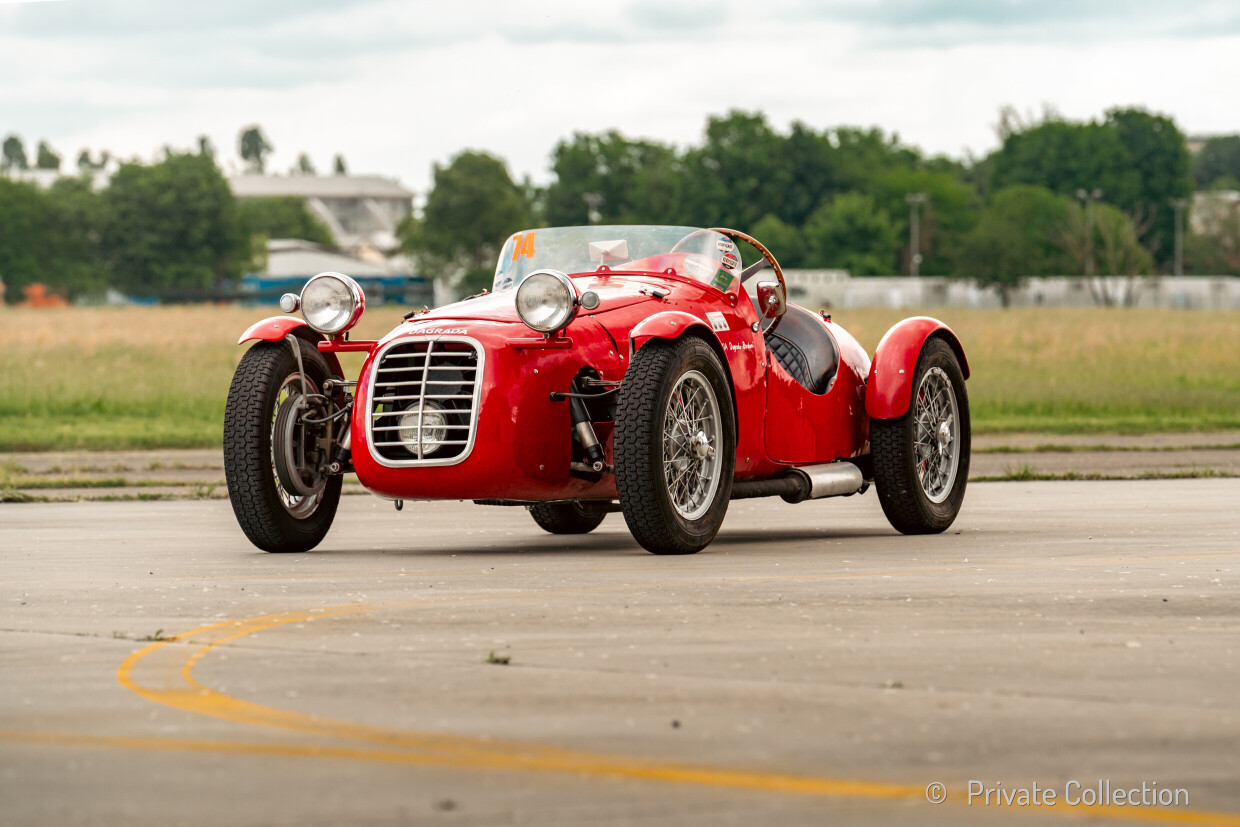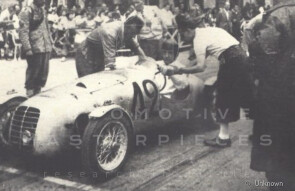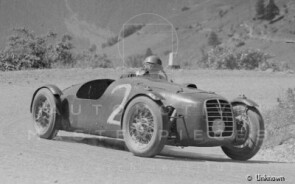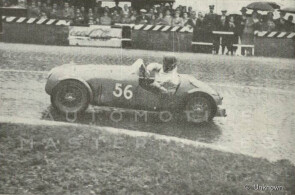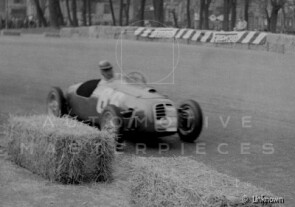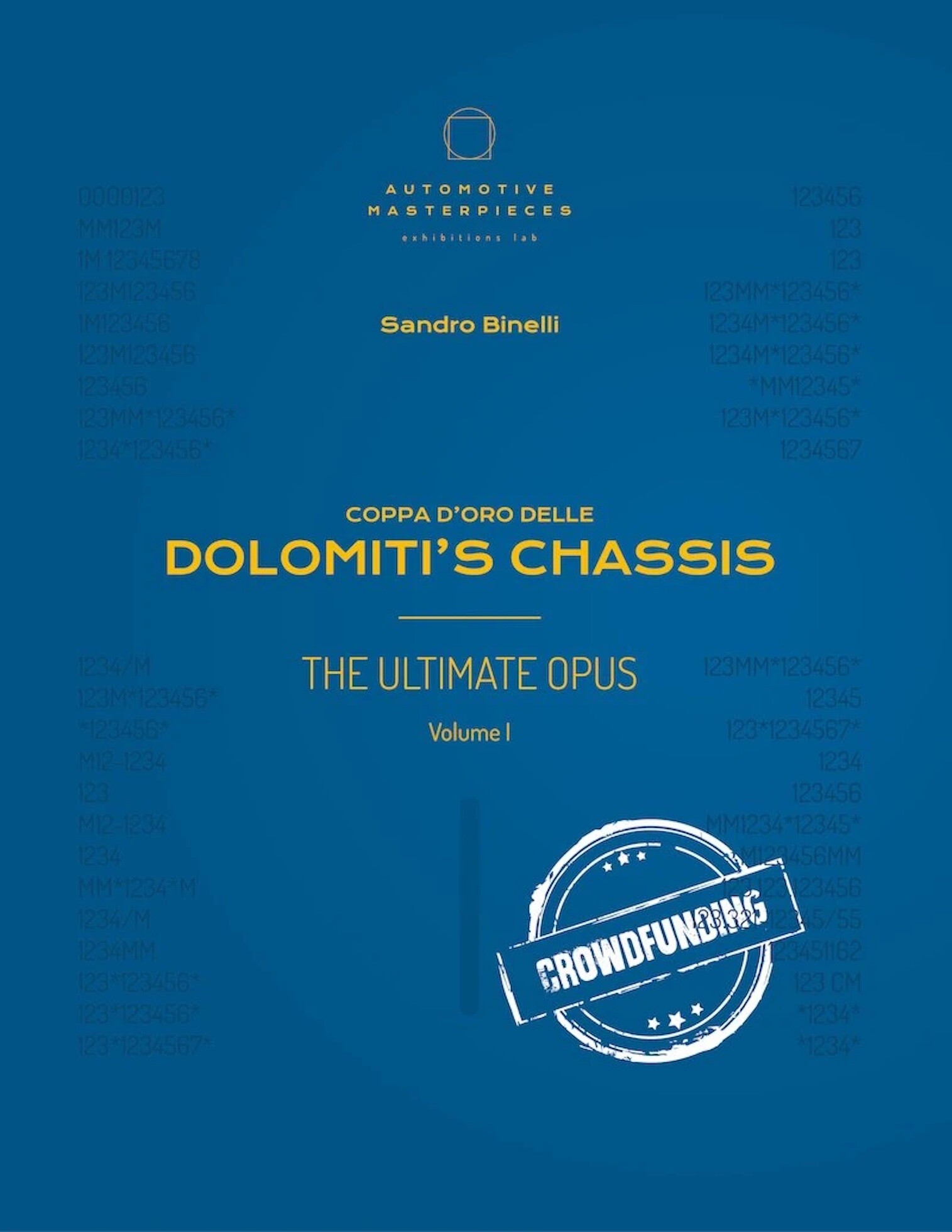
1949 Dagrada Giannini Fiat 750 Sport
ON/OFF
Why am I an Automotive Masterpiece?
L. Limited edition cars
no. 2 manufactured, no. 1 remaining, 1st built. One of two near-twin barchetta by Dagrada
The first known work by Angelo Dagrada was the upgrade of a 750 Sport derived from a Fiat base, commissioned by Vasco Pasquinelli. The car had originally been built for the driver Dal Monte by Carrozzeria Meteor and featured a powertrain prepared by Nando Tajana, equipped with a Testadoro hemispherical head and a crankshaft with three bearings. Dagrada worked on the engine, replacing it with a more reliable Siata head, enabling Pasquinelli to achieve excellent results. In 1949, Dagrada built a new 750, again using a three-bearing engine, but this time it was a Giannini G1 unit. This engine was derived from the Fiat block originally used in the Fiat 500. The Roman manufacturer initially added a third bearing to the Fiat block, later replacing it with a Giannini cast iron block, and eventually developed a version with both the block and cylinder head made of light alloy in 1952. This allowed the G1 engine to remain competitive with the 750 twin-cam engines from Stanguellini for a few more seasons. Dagrada installed one of the early Giannini unit, with a Fiat derivation block, outfitting it with a Siata head, as in Pasquinelli’s car, on a tubular chassis of his own design, which he covered with a simple body. The car was remarkably light, weighing only 340 kg, and was among the fastest in its class. With this car, driver Franco Bordoni Bisleri began achieving successes before moving to higher racing categories. The year 1950 was full of satisfaction for Dagrada: out of 12 races, his cars achieved six first-place finishes, six second-place finishes, and one third-place finish. In addition to the car driven by Bordoni, Dagrada's team expanded with another 750 Sport built for Milanese driver Alberto Della Beffa, differing in several details, especially at the front. The 1951 season brought even more success, as a third 750 Sport was added to the lineup. However, Angelo Dagrada was forced to step back from racing as a driver after two serious accidents, first at the 1950 Pontedecimo - Giovi race and later in 1952. His 750 Sport cars, nonetheless, continued to race successfully. Over time, their bodies were updated to comply with new technical regulations, but they lacked the necessary technical development to race effectively against the fierce competition from new twin-cam engines and more efficient, lighter chassis designs. The exact number of 750 Sport cars produced by Dagrada is unknown, but given their handcrafted construction, it was certainly very limited.
The Dagrada Giannini Fiat 750 Sport, chassis no. 0243849, is the car that, driven by Franco Bordoni, made Dagrada renowned among small sports cars. It was completed in 1949 with one of the early Giannini G1 engines derived from Fiat, featuring a distinctive S.I.A.T.A. head, and was mounted on a tubular chassis and body built by Dagrada itself. The design was minimalistic, with a streamlined shape, lightweight motorcycle-style fenders, a single headlamp hidden behind a seven-bar chrome grille—the sole nod to elegance. Everything else was purely functional. Over its first year, the car underwent constant evolution: it was initially unpainted and lacked badges, later featuring a DAGRADA script on the nose and eventually being painted. Additional modifications, such as varying windshield sizes, were made to adapt the car to different races. The earliest documentation of the car dates to 1950, when the chassis was officially stamped ex-officio “MI0243849MI”, registered in Milan in March, and transferred from Angelo Dagrada to Franco Bordoni Bisleri in April. This retroactively suggests that the car had served as a works vehicle for Dagrada, even though it had already been raced by Bordoni. The first recorded event was the July 1949 “Notturna all’Ippodromo di Mirafiori,” where Bordoni achieved an excellent second place in class. This was followed by a seventh place overall at the Susa-Moncenisio hill climb. In August, Bordoni entered the Coppa Adriatica and placed fifth at the Circuito Automobilistico di Senigallia, marking his circuit racing debut in the Sport category. The race was a fierce three-way battle with Puma and Musso. While Bordoni was the main driver of chassis no. 0243849, Piero Carini, a Genoese racer, occasionally drove the car, as he did at the 1949 Aosta-Gran San Bernardo race. In September, Bordoni delivered an exceptional performance at the Vittorio Veneto-Cansiglio, finishing second overall, just four seconds behind the winner in a powerful O.S.C.A. He also placed second overall at the Biella-Oropa despite a gearbox failure. On April 5, 1950, Franco Bordoni, nicknamed “Robur,” officially registered the car in his name. His close relationship with the car’s builder is evident, as two weeks later, Bordoni and Angelo Dagrada appeared together at the start of the 1950 Mille Miglia. Photos show a metal bar crossing the nose, supporting two auxiliary headlights for the long nighttime stretches, as well as the license plate. The car achieved excellent times up to Rome but was eventually forced to withdraw. Bordoni continued to race extensively throughout 1950, achieving numerous class victories despite occasional retirements due to bad luck. In September, he was involved in an accident with Nino Farina and Farina’s wife in an Alfa Romeo at the Pontedecimo-Giovi, yet still managed a second-place class finish. Angelo Dagrada, serving as his co-driver, suffered severe injuries in the crash. For the 1951 Mille Miglia, a small mystery remains: Bordoni was registered to compete with the Dagrada but did not start, opting instead to race with a more powerful O.S.C.A. That year, he achieved outright victories at the Circuito del Castello and the Coppa Ascoli, setting new speed records. He also claimed first place overall at the Notturna all’Ippodromo di Mirafiori. In 1952, he secured a second-place overall finish at the 2nd Coppa Michelin on the Circuito del Valentino. Bordoni continued to race fiercely for top class positions until June 1953, when the Dagrada driven by Giorgio Xeconti took part at its final known event, the Varese-Campo dei Fiori, featuring integrated fenders on its streamlined body to comply with new regulations. The car finished third in class. Chassis no. 0243849 remained in Bordoni’s ownership until 1962, even though there were no further racing entries after 1953. In July 1962, it was purchased by Italo Ascani and re-registered in Perugia in 1963. In 1996, it became the property of Giuseppe Bianchini, a collector and expert on small Sport cars, who undertook a full restoration. The original G1 engine block had been excessively worn from repeated overboring, leading Bianchini to replicate the engine using a less worn base. He restored the motorcycle-style fenders and reinstalled two external auxiliary headlights. Bianchini kept the car until 2013, when it was acquired by renowned collector Jan de Reu. The car received a FIVA passport and was purchased by Dutch collector Luc Brandts, marking the start of its career in Mille Miglia reenactments. Since 2024, the car has been part of a private collection. It has been featured in numerous automotive books. The Dagrada Giannini Fiat 750 Sport, chassis no. 0243849, has a near-twin in chassis no. 0022651, which raced with driver Gramegna. However, it differs in several details, making it both a one-off and, at the same time, the only surviving example of these two.
